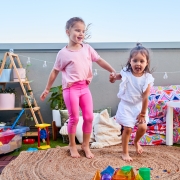Counterfeit Toys
Every year, thousands of counterfeit toys are seized at external borders because they infringe intellectual property rights, safety and health requirements. Of the fake products that get through, many people think that they are genuine, when they are actually not. Some of them have the wrong price, others have the wrong logos and some even under perform compared to the original toys.
What is a counterfeit toy?
A counterfeit toy is a toy that is made and sold without the permission of the owner of the intellectual property rights. They are illegal and will not adhere to safety standards. There are harsh penalties for anyone who makes or sells them.
Fake toys often look like genuine products, but they are not always made of safe materials, they may be poorly designed and/or may not perform as intended and as such they can be dangerous.
They are usually made in factories that are far away from the markets they are sold in. This means that they pass through many hands and may fall victim to poor quality control and no toy safety considerations in place, which is why they are sometimes dangerous.
How are counterfeit toys made?
The toy manufacturing process is complex and requires many steps to create a legitimate finished product. In the case of counterfeit toys, these steps are often copied, shortcuts are taken and substandard materials and/or child labour may be used. Plus, production of counterfeit toys also creates environmental pollution.
Who uses counterfeit toys?
All kinds of people knowingly or unknowingly use counterfeited goods:
- Parents who think that they are buying their children a genuine product, when in fact they are putting them at risk.
- Businesses that are unaware that they are selling or using counterfeit toys or who buy them from suppliers that deal in counterfeit toys.
- Individuals who knowingly sell counterfeit toys for profit.
What are the risks of using counterfeit toys?
Counterfeited products can be dangerous to the health and safety of children and other vulnerable groups. Some of the risks include:
- Bacteria and other microorganisms that may cause infections.
- Poor quality materials that are harmful to human health.
- Mechanical hazards that cause injuries like cuts, electric shocks etc.
- Small parts that could come away easily and be a choking hazard.
- Fire hazards due to poor quality electrical components.
How can you tell if a toy is counterfeit?
The best way to spot a counterfeit toy is to know what it is supposed to look like in terms of design, colours and logos etc. Some counterfeit products are very well made and hard to tell apart from the originals. But there are some tell-tale signs:
- If something is sold at a very low price, it’s probably too good to be true and there is a good chance it is counterfeit.
- The wrapping on the toy may be of a poor quality compared to the original product.
- Another red flag is that boxes may be poorly printed or damaged.
- The toys themselves may look different from the originals, e.g. misshaped, substandard materials used, etc.
- The CE mark will be on most toys sold in the European Union, but not on imported toys. Look for the CE mark (or a UKCA mark going forward) on the toy and check to see if it includes the following information:
- Name of manufacturer or importer
- Address of manufacturer
- If a toy does not have the CE mark, it does not comply with EU standards, and may pose a health risk to children.
How can you avoid buying counterfeit toys?
- Always buying from a reputable source is the safest way to avoid buying counterfeit toys.
- If you are buying toys from markets, holiday shopping or from street vendors check the licence of the seller.
- It is advisable to buy from well-known shops or online marketplaces. These have reputations to protect and are less likely to sell counterfeit toys.
How can you tell if an Internet shop is reliable?
- See if the company selling toys online has an address and a phone number on their website.
- When shopping online check if the company has a privacy policy and if they will tell you how they will use your personal information.
- Check to see if they are a member of a trade association.
Find out more about what’s important when purchasing online in our Safety in Educational Toys blog.
What should you do if you encounter a fake toy?
If you encounter a fake toy, you should report it to your national toy association. They can then let you know the next steps. This will help to keep the toy industry safe by protecting consumers’ health, manufacturers and brands around the world.
Our Mission
Edx Education develop quality hands on educational materials to foster children’s learning through play in the classroom and at home. As a quality educational manufacturer, there are many safety guidelines that Edx Education adhere to.
We keep the highest certifications with our products and company (from CE, ASTM, CPSIA, ISO9001, ISO14001 and so many more.) We fully agreed with the BTHA calling on the government to take steps now to ensure a child is not seriously hurt or killed by an unsafe toy.
View our full range of educational products for children of all age groups, abilities and developmental stages here:
UK – https://www.shopedx.co.uk
USA – www.amazon.com/edxeducation
Edx Education – Heather Welch
To find your local Edx Education retailer head over to Where to buy – Edx Education.



 edx education
edx education